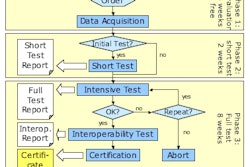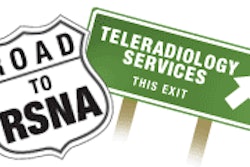The implementation of RIS and PACS products in radiology has demonstrated cost-saving efficiencies, greater procedural throughput, and an increase in customer satisfaction. The systems also have the capabilities for a practice to measure a collection of statistics on its technologists' output, which can provide a group with metrics to improve both performance and patient safety, according to a study by a Canadian researcher.
"We set out to discover if the data available on a PACS/RIS can be used to measure objective indicators of a radiographer's performance," said Valentina Al Hamouche, a Canadian radiographer who presented the results of her research at the European Congress of Radiology (ECR) in Vienna earlier this month.
Al Hamouche, who conducted the study as part of her master's thesis under the aegis of the Toronto-based Michener Institute for Applied Health Sciences, interviewed three radiology managers and three PACS administrators at three different sites. Although Al Hamouche did not disclose manufacturer information, she said that each facility utilized different RIS/PACS products.
As part of her study, Al Hamouche asked radiology managers about their means and methodology of radiographer performance appraisal. She found that the managers were assessing their radiographers' performance subjectively through observation and were calculating attendance and absenteeism as a means to measure performance. In fact, although the capability was available to all the managers, only one was using the RIS to generate radiographers' schedules, she noted.
"Data available on RIS/PACS is not used in performance appraisal," Al Hamouche said.
Over a four-month period (February to May 2006), she collected integrated RIS/PACS data related to the performance of five radiographers on CR and DR systems, which she plotted on a spreadsheet. According to Al Hamouche, the data points included the following:
- Productivity on the basis of cases performed in a certain period of time
- Number of hours worked
- Number and reasons of repeated images
- Number of images rejected by radiologists
By extracting data from the RIS/PACS logs, Al Hamouche was able to manually calculate a percentage contribution rate to the entire practice workload for each radiographer on a monthly basis. In addition, the individual radiographer's repeat rate compared with the department's total repeats was also able to be assessed on an objective basis.
A radiographer's repeat exams were further classified by the reason for the repeat, which was selected by the radiographer from among the following seven choices:
- Clipped anatomy
- Exposure index
- Positioning error
- Technique
- Test image
- Patient motion
- Other
The analysis of the RIS/PACS data was used during the performance appraisal review of the five radiographers, Al Hamouche said.
"The strengths and weaknesses in performance were identified by both the manager and the radiographers," she said. "Both the manager and the radiographers were able to reach a decision about planning further continuing education activity on the basis of the RIS/PACS data."
Al Hamouche noted that the current setup of the RIS and PACS at the facilities she surveyed does not provide for an automatically generated report to be created using her study metrics. She believes that such capabilities for each modality in a practice would be a useful managerial tool, as well as provide technologists with quality-control feedback on the studies they perform.
"The purpose of such a (software) module is to develop, not to criticize, radiographers' work," she said.
By Jonathan S. Batchelor
AuntMinnie.com staff writer
March 21, 2007
Related Reading
Small steps create significant impact in patient safety, March 11, 2007
Systems for reporting adverse events highlight paths to improvement, February 23, 2007
Study finds link between RT retake rates and image quality, December 15, 2006
Study: Premature wear can cause CR image artifacts, September 21, 2006
Scorecards enable practice management at a glance, November 2, 2005
Copyright © 2007 AuntMinnie.com



















